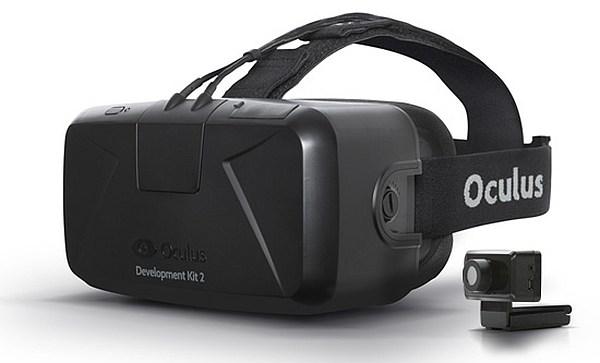Do they have something that works as well as DTS Headphone:X? X is mind-blowing and the Rift is mind-blowing... seems like it'd be a no-brainer for them to team up.
Oculus Rift: The Future of Home Entertainment

I’m standing in the cockpit of the Millennium Falcon. Outside the viewscreen is a sunset across the clouds of… Bespin? The mandibles loom iconically to my left. I look down, the empty seats beckon. Turning around, I walk down towards the dorsal turrets. Leaning forward, I can peer down and up, Han and Luke nowhere to be seen. For the moment, the ship is mine. In the lounge, R2 follows me with this single red (is that thing an eye? I’ve never known). The maintenance corridor where Han and Leia shared a kiss is dark, but accessible. Instead I make my way down the corridor to… a blank black wall.
This is the Millennium Falcon Experience, one of the many free games and demos available for the Oculus Rift. A labor of love by developer DarthDisembowel, it’s not complete, but then, neither is the Rift.
Developer Kit 2
Announced two years ago, the Oculus Rift impressed all who tried it. Using off-the-shelf parts (basically, an entire cell phone), the Rift had near-perfect head tracking, making the virtual reality experience closer to a reality reality experience than ever before. Since then it’s been improving constantly (with no small amount of help from uncle Mark).
A few months ago they announced the second Developer Kit, essentially Oculus Rift 0.2, which featured many enhancements over the early prototypes, including a bigger and higher-resolution screen, additional degrees of head tracking, and more consumer friendly packaging (the early prototypes were little more than mobile phones taped to ski goggles).
I ordered one, and it arrived last week.
For something that’s expressly not yet a consumer product, the DK2 feels a lot like a consumer product. It’s well packaged, has a printed instruction manual, and feels complete.
However, it took me almost two hours of tinkering to get it to work with my PC. Computers are notoriously finicky, and it’s hard to say how much a Rift 1.0 would really solve all install problems.
But I did get it working. My first test was an included demo, called Tuscan, which lets you walk around a scenic Tuscan villa. Having been in Tuscany a few weeks ago, this seemed amusingly appropriate.
Now I’ve tried two versions of the Rift before this, at CES 2013 and 2014. This was more polished than both. Sliding the headset over my eyes was just as exciting as the last two times. Yes, there’s just this moment of sci-fi awesomeness as your brain adjusts to the virtual word. Little motions of your head are instantly (or it seems that way) converted to movements on screen. It’s natural and fluid.
With the DK2, there’s an additional component beyond the goggles: a small camera that monitors your head movement. So looking up, down, left, and right is read by the accelerometers in the goggles, while movement back and forth is caught by the camera. So basically any movement you can do (other than standing up, say), is translated on screen.
There are two main issues with the Rift at the moment, and both are fixable.
The first is the screen. Though each eye is getting 960x1080, it’s not nearly enough for something so close to your eyes. Chris Heinonen’s 4K calculator shows 4K resolution would be great. As mobile phone and phablet screens increase in resolution, so too will the Rift.
The other is sound. What would be ideal is some sort of Dolby Headphone head-tracking surround sound. I’m sure someone is working on this, and indeed I bet Oculus knows this, as there’s an extra USB connector on the goggles.
But conveniently, those are two things Oculus is already on. At their recent developer’s conference, Oculus showed off their next prototype, which included a higher resolution screen (almost certainly this), headphones, and other updates. Excellent.
Bottom Line
The Oculus Rift is the promise of virtual reality, realized. The DK2 is not a final product, but shows off the potential of what the Rift can and will be to an impressively complete extent. Or to put it another way, even in this unfinished form, the Rift is better VR than anything that’s come before it.
In the coming weeks I’m going to try out some specific games with the Rift, and try to put into words how different the experience is compared to using a regular screen.
- Log in or register to post comments

It's expensive but the Smyth Realizer headphones/system also has a head motion sensor so sound can be placed in space, as in your virtual reality image. Not sure if the DTS system does this. (Although I'm sure DTS is much much cheaper.)





































































